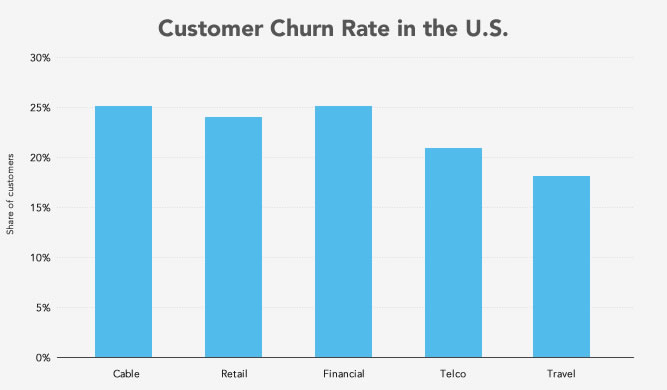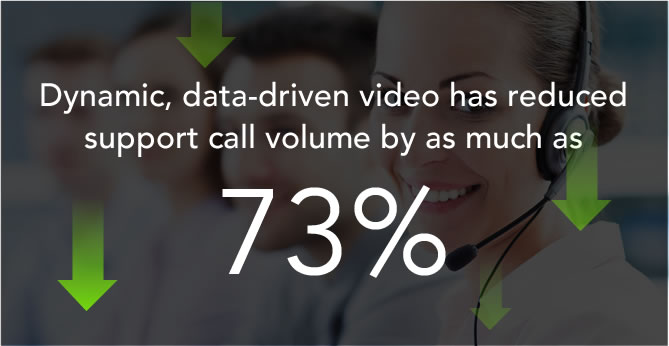Think back to your last customer service interaction. Maybe it went great! Or, more likely, there was room for improvement.
Perhaps it began with an online search. But since you couldn’t find the answers you needed online, you turned to the customer service number. You may have encountered some hold music, a few transfers before you got to the right person and then finally had your issue resolved.
How long did it take? How did you feel? If these kinds of challenges frustrate you, you can bet your customers feel the same way when they encounter something similar.
Customer service needs vary. Sometimes it’s a how-to for something simple, like setting up an account. Or maybe something has gone wrong, like a charge on your bill that doesn’t make sense. How can you handle these issues — the right way — considering websites already have hefty FAQ pages and call centres are struggling with high call volumes and limited staff?
It’s time to go back to the basics and make customer service truly human and personal. It’s about understanding people and their problems as unique situations. And doing it seamlessly and at scale so everyone gets the service they need.
But first, let’s look at the customer service landscape without digital personalisation today.
The Challenges for Today’s Call Centres
The global pandemic presented unprecedented challenges across industries. With more people at home due to lockdowns and unable to get information face-to-face from a retail store, it forced an unusually high call volume for customer care departments. Add to this the complexity of agents working from home, and the strain on customer service teams reached a breaking point.
Recent data illustrates the impact COVID had on call centres:
- Call centre volume tripled in some cases during the pandemic.
- Wait times increased from 3-6 minutes to 10 minutes or more.
- Call abandonment rates rose as well, estimated at 2x to 5x what they were pre-pandemic.
Another problem is the number of callbacks, which can make up as much as 30% of a call centre’s volume. This is when a customer must call more than once to gain resolution to an issue or find answers to an ongoing question. Not only does this prolong the customer’s frustration, but it places a higher burden on staff.
The Real Cost of Bad Customer Service
It’s critical to understand the role of customer service because these individual customer-brand interactions have a big impact on whether or not the customer will remain a customer. Over 60% of consumers report no longer doing business with a company because of a poor experience, according to a Microsoft State of Global Service report.
The same study goes on to point out that a third of those surveyed ranked having their issue resolved in one call as the top priority. And avoidable customer churn is estimated to cost U.S. businesses $136 billion per year.
In other words, strong customer service is a big deal when it comes to retention. When someone feels they haven’t received the information they need — or been treated the right way — they’ll choose another company next time.
Taking Customer Service Online for Self-Service
To reach customers at scale, being able to self-serve online is essential. This puts the tools a customer needs right at their fingertips, allowing them to get the information on their terms. And while this may seem obvious to most in today’s digital age, not all companies know how to do it effectively.
Online customer service benefits the company and the customer:
- Reach more people. Increase your numbers of contacts by reaching more people where they are now — online.
- Answers in real time. Help customers find what they need faster, no putting them on hold.
But think about how your customer is feeling when they need customer support. Let’s get in their headspace.
Imagine they need to file an insurance claim, don’t understand their latest bill or have a product that’s not working. Are they happy? Probably not. And navigating a lot of fine print to understand how they should resolve their issue only piles on the stress.
Here’s an example from the recent mortgage forbearance situation that happened during COVID-19.
This customer care video proactively answered customer concerns about a highly sensitive issue — paying for their home during a global crisis.
The takeaway? Take customer service online, but make sure it still is relevant and convenient. It’s high-touch-style support with low-touch effort.
How Digital Personalisation Bridges the Gap
Digital personalisation is one way to get your customers to self-serve online while providing helpful, personal service. Because it’s personalised, it answers the customer’s specific need.
But format matters, too. Remember the scenarios above. Your customer is feeling overwhelmed, maybe worried, impatient. Now isn’t the time to hit them with a lot of text.
How you talk is just as important as what you say.
- What you share: Specific answers to address individual needs and next steps
- How you share it: In a format that’s easy to understand, human and personal
Video works well here. Don’t tell them. Show them. Put the critical information in a short video to address the most common customer service scenarios.
Customer Service Personalised Video Use Case: Bill Explainer
Make it dynamic so you show them only what they need. See the example below for how dynamic scenes work with a Personalised Video. Your final video can vary for each customer, including different scenes depending on who views it. Here, it’s a new customer versus an existing customer.
You can do this at scale to literally millions of customers, just by using data to personalise your customer support videos.
Does It Work?
Here’s the $64,000 question (or the $136 billion question, if you remember the customer churn cost from above). Does using video actually help customer support?
The short answer: It does.
Over 40% of marketers using video have found that it reduces support call volume. But that’s just generic video. Using dynamic, data-driven video, we’ve seen call volume drop by as much as a staggering 73%.
Going back to the example earlier of a customer needing help understanding their escrow account. Imagine a short video with their mortgage and escrow balance clearly displayed, while the video walks through the escrow statement and how to read it. The customer gets the information they need about their mortgage, but doesn’t have to call a customer service number — saving both time, questions and frustration.
And perhaps increasing customer loyalty and satisfaction at the same time.
A New, Improved and Human Approach to Scaling Customer Service
Call centres continue to face challenges with higher call volume and longer wait times. A company can put as much information online as possible, but unless it’s the right information, personalised for that individual, it may not solve a customer’s problem. And an unsolved problem is a recipe for customer churn.
Personalised Video not only makes customer service more human, but it bridges the gap between the complexity of customer care problems and the need to scale to a large customer base.
For more, read our blog post about how to reduce call volume to improve customer satisfaction. Or let us show you how it works in action for a variety of industries, from telco to hospitality to banking and beyond.








